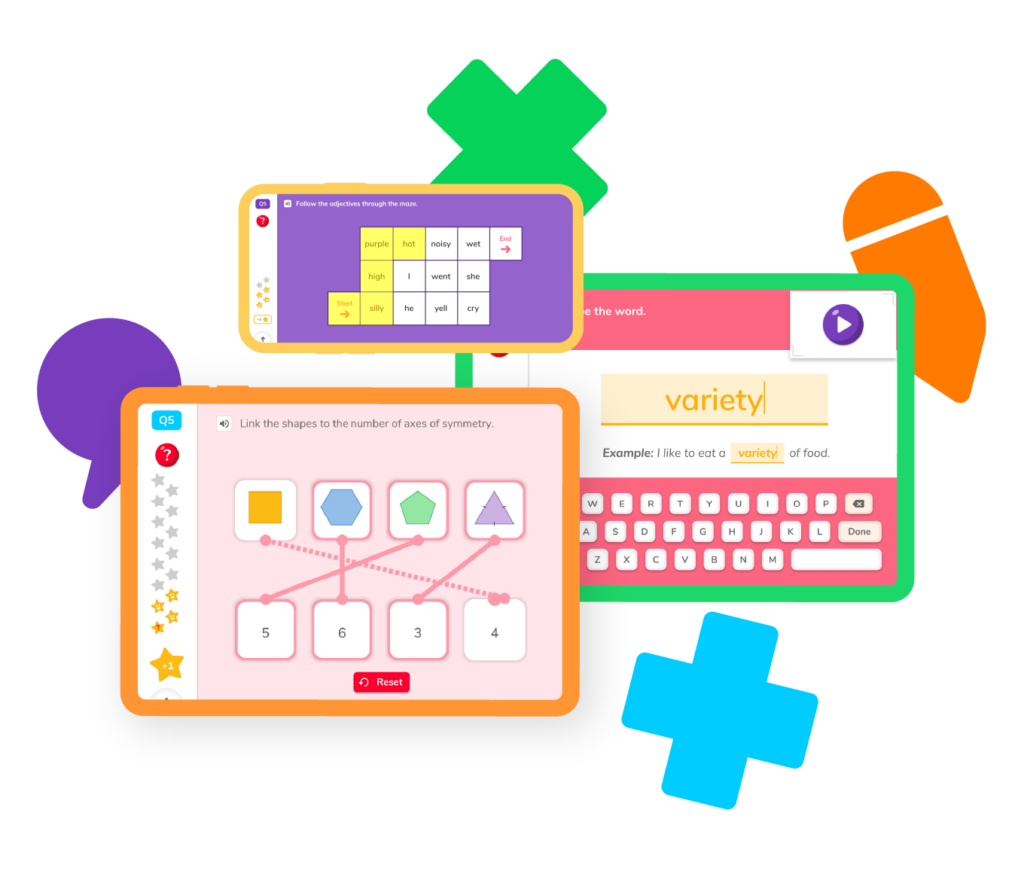Mental math is an important skill for children to have, but how do parents help develop it? Luckily, there are many mental math strategies to help us.

Mental math is the ability to calculate math in your head without working it out on paper or needing memory aids, such as a multiplication chart. It requires basic number sense to complete calculations quickly.
The ability to perform mental math has been found to improve speed of thought and increase accuracy when completing math problems. Most importantly, it can improve a child’s confidence in their math skills.
The most common question asked by students is ‘how to get fast at mental math’, and there are lots of techniques that can help to boost their skills.
Improvement requires knowledge of helpful mental math strategies and frequent mental math practice.
There are many ways to help your child get better at mental math. Building confidence and practicing repetition remains at the center of all of them.
One of the most important aspects of mental math practice is repetition, repetition, repetition! This is how many of us remember times tables, commonly used in mental math, into adulthood. Consolidation of multiplication takes time and flashcards are a great way to help.
Making flashcards with addition, subtraction, multiplication or division expressions on them is a great way to practice this skill. Best of all, flashcards can be easily transported and used on the go, making them ideal for use on trips!
You can add an extra challenge by timing how quickly you can get through your flash cards.
Number bonds are the basis of how children work out most mental math problems, so encouraging young learners to practice them is a good way to increase their skills in mental math.
Ask them to think of all the addition combinations they can that make 10, such as ‘8 + 2’ and ‘6 + 4’. Doing this will help them to understand number bonds better. Then, once they feel comfortable with this, encourage them to move on to number bonds of 20, 50 or 100.
Developing logical thinking is vital for children as they get older, and one way to do this (while getting in their mental math practice!) is by using real-world situations to get them to tackle problems.
For example, when baking with them, ask them to double the recipe. Or, when you’re grocery shopping, ask them to divide groceries into three equal groups or to round up the prices at checkout.
DoodleMath is a math practice app that’s specifically designed to help children to develop mental math skills.
Designed to be used for just 10 minutes a day, its interactive exercises and games keep learning fun and engaging, ensuring that children always look forward to math practice!
You can start a free trial to test it out!
As well as activities to aid your mental math practice, there are also mental math strategies you can use to help your child improve their mental math skills and confidence when completing mental math.
If your child is confronted with a large addition or subtraction sum, a great strategy to teach them is to break it into smaller parts.
It’s best to break the hundreds, tens, and ones up so that they can be added together separately and then totaled at the end.
For example, take a look at the following sum:
541 + 235.
By breaking this down, the numbers can be more easily added together:
500 + 200 = 700, 40 + 30 = 70 and 1 + 5 = 6
These can then be put back together for a final number – 786!
Once your child has gotten the hang of this, they may find it easier to keep the tens and ones together and to separate the hundreds, as this makes it easier when the unit adds to over ten. For example, 418 + 513 (400 + 500 = 900, 18 + 13 = 31, meaning that the overall total is 931).
Mental math practice is all about finding patterns or breaking down trickier problems. One simple way to make addition or subtraction sums easier is to round up or down to a number that your child is more comfortable working with.
Children are more confident when adding or subtracting numbers that end in five or zero, so adjusting calculations to suit this and readjusting them at the end can help tackle more complex problems.
For example, think about the following sum:
492 +180.
By rounding the 492 up to 500, the calculation becomes much easier than before. So, to round up to 500, your child will need to add on 8. Be sure to remember this later!
500 + 180 is much easier to solve, and equals 680
And now comes the final calculation: remember to take away the 8 you added on earlier! This means that the total should be 672.
Most children find addition easier than subtraction, but many are not aware that they can flip difficult subtraction sums to help answer them.
For example, imagine your child or pupil is working on the following:
21 – 18
This can easily be flipped round to __ + 18 = 21.
If your child doesn’t struggle with subtraction sums, this method is also a great way to double-check quickly if the answer they have worked out is correct.
Mental math practice takes both time and patience, but there are tried and true ways you can use to support your children. Remember: repetition is key to embedding required knowledge.

Parents, sign up for a DoodleMath subscription and see your child become a math wizard!

Book a chat with our team
If you’d like to use Doodle’s browser version, please visit this page on a desktop.
To log in to Doodle on this device, you can do so through our apps. You can find out how to download them here: